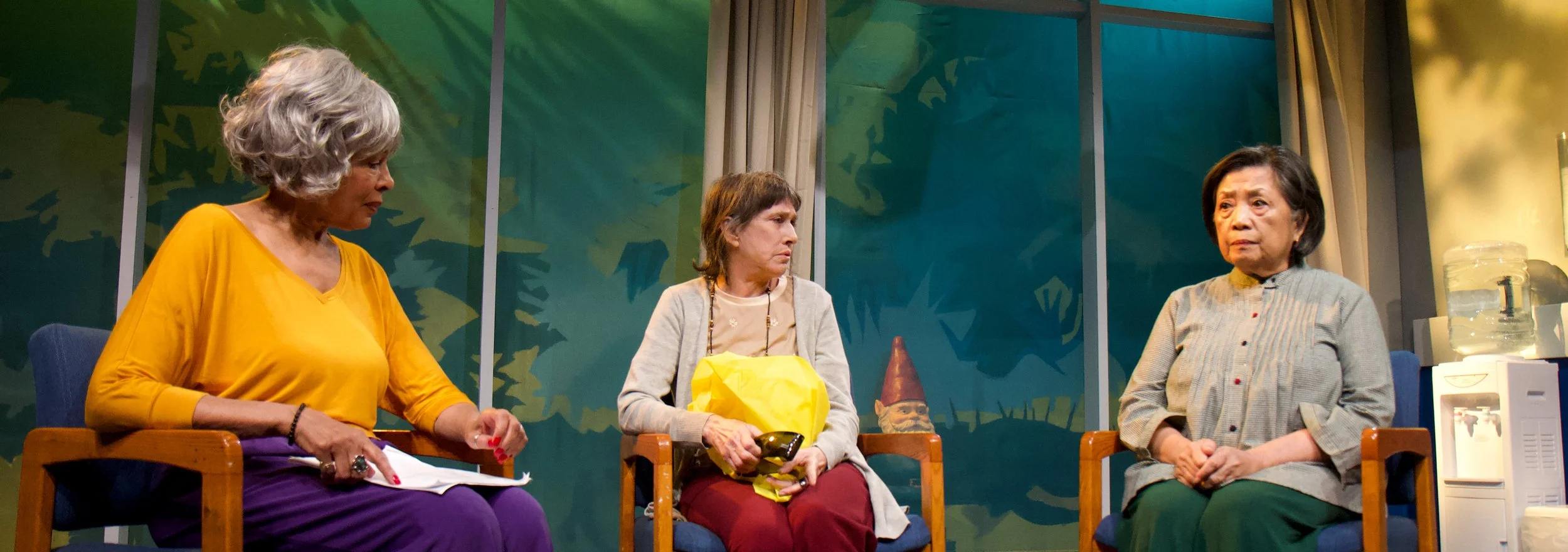The Gambler opens much like a Sunday afternoon in the Arbat District of Moscow in the 1800s—the cast strolling across the stage familiarizing us to the characters. Charming, enigmatic, prideful, stuffy and arrogant are just a few attributes that come to mind when observing each character. Glyn Maxwell’s play, based on the 1866 Fyodor Dostoevsky novella of the same name, is currently running at The Wild Project in New York City through Feb. 14. Dostoevsky, in a time of financial difficulties brought on by an out-of-control gambling habit, dashed off the novella to pay down debts basing the work on his current state of affairs. The set is perfectly stark with a bench and four chairs, which are aptly utilized throughout the one hour and 45 minute performance. Lighting, by Tsubasa Kamei, creates scenes perfectly suited to the sparse set, although some shadows need to be addressed. The playwright crafted an ensemble piece in The Gambler, and with the direction of Karen Lordi-Kirkham, we are invited to experience a vivid ensemble, led by the affable Alexi, played by John Cosentino. What Cosentino is truly capable of becomes evident during an interchange with Matt Stapleton, who brings all the best qualities of a Brit as Astley. Rounding out the suitors is Joseph J. Menino, portraying the ruthless French investor, de Grieux, who delivers an equal amount of bravado and rich mannerisms to his character.
These three suitors, each in their own style, desire the attention and hand of Polina, (Poppy Liu) the General’s niece and ward. Polina is conniving in a schoolgirl way, and yet, “is no one’s ward,” further declaring, “I am no one’s anything.” Given as much rousing attitude as comes through in Liu’s words and expressive eyes, a more upright attitude in her posture would have been an added bonus. Whereas next to Alexi, whose posture takes on downtrodden, subservient qualities, Polina requires the stature her upbringing would have taught her thus far in life.
John Lenartz effusively rounds out the performance as retired General Zagorski, with the vibrant Elise Stone bursting on the stage as Antonida Tsareyevitch Vassilyevna, referred to as "Granny." Add the convincing, conniving and climbing Morgan Rosse as Blanche de Cominges and the ensemble is accomplished, deep and tight. The director provides them with ample opportunities to bring their best; the carriage ride, the soup scene, and of course, the roulette table! It’s hard to take your eyes off Granny, Alexi and the General at the table as all the characters have a stake in the outcome. They each bring the scene into existence in their own delightful style.
The details are where the script becomes uneven, lacking deference to Russia and St. Petersburg in the 1860s, which is most evident with Granny’s pronouncement, “You’re not getting a f*#@*ing ruble!” And then her use of the word, "Frenchie," at the roulette table, or when she refers to her mode of travel as a "choo-choo train." For a wealthy Russian aristocrat who is richly colorful, her dialogue comes off childlike or common at times. Even referring to her character as "Granny" rings odd. Polina is spoken of as “a Russian spiritual young soup-stirring lady.” While her character may be spirited, she exhibits little in the way of spirituality.
Ellen Mandel deftly handles the sound design along with original music for the opening and closing. The gentle clacking of the carriage ride, the crystal and china effects at the dinner table, and the spinning wheel of the roulette table added to the experience and never overplayed the actors. Homage to Dostoevsky and the rich music of Russia, though, would have only added to the experience.
Costume designer Jennifer Stimple-Kamei delivers clothing and jewelry befitting of the characters and is well done for the most part. Alexi is attired in brown tones and a vest very much in keeping with his position, while the General, Blanche, de Grieux, Astley and Granny wear their wealth and class smartly. Polina’s costume and hair, however, occurs as an afterthought sporting a very lightweight long blue skirt and cream-colored camisole. The youthful Liu embodies a present-day feel rather than a Russian heiress in the 1860s. More options, in keeping with the period, seem readily available with Liu’s beautiful long hair than a simple ponytail.
While you might think Dostoevsky was writing about his own predilection with a title like The Gambler, you’ll find that with the exception of the Grandmother in this production, everyone delivers his or her own version of a gambling problem. No one better, though, than Alexi holding a coin high at the roulette table eagerly placing one more bet.
The world premiere of The Gambler is presented by Phoenix Theatre Ensemble, and runs through Feb.14 with a mix of evening and matinee performances at The Wild Project (195 E 3rd St. between Avenue A and B) in Manhattan. Tickets are $25 and can be purchased by calling 212-352-3101 or visiting phoenixtheatreensemble.org/the-gambler.








